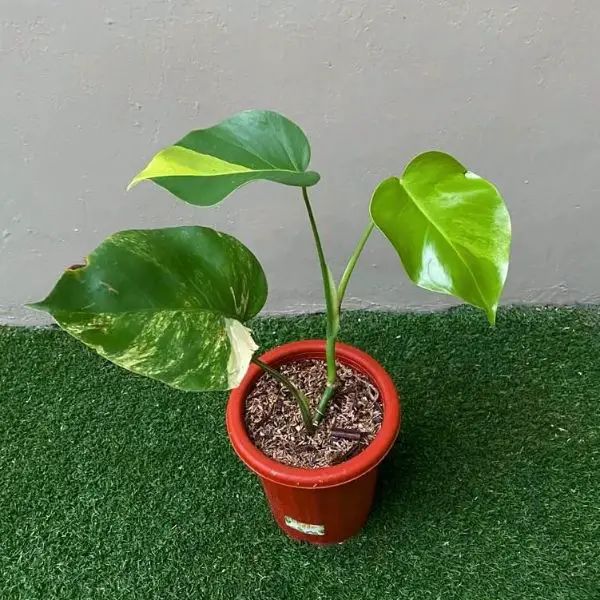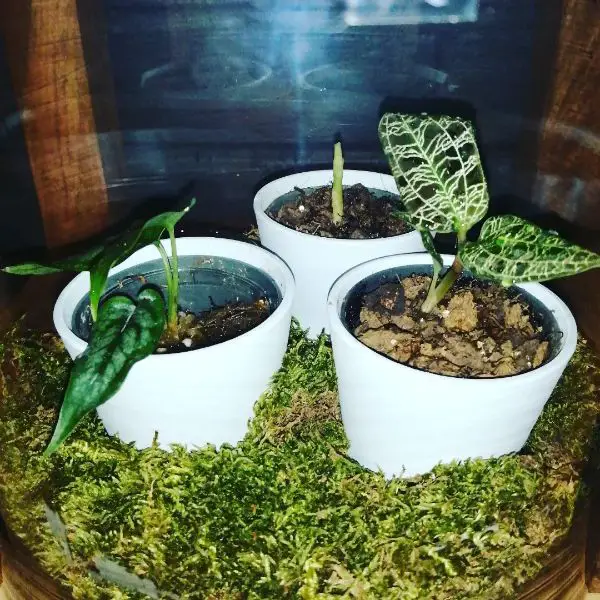Soil is an indispensable source of nutrients for plants. Among the most critical factors to ensure the healthy growth of Monstera, you can not ignore the role of soil. However, it is also straightforward to ignore this factor or not know what to do to choose the best soil for Monstera plant. We follow along in the article below.
What is the best soil for Monstera plant?
Humus is the best soil for Monstera with a high percentage of humus combined with alluvial, sand, and clay, the best ground for Monstera. The factors that make this soil attractive and suitable for plants are higher pH: The best pH for most Monstera is around 6.0 – 7.0. The pH level affects the plant’s ability to grow. This range allows plants to take up good nutrients and is an optimal environment for soil organisms, such as earthworms.
Higher calcium levels: plants need calcium for healthy growth. Calcium helps maintain the balance of chemical substances in the soil. It also ensures that water reaches the plant’s roots by improving the soil’s water-holding capacity.
It also contributes to the porosity of the soil, allowing oxygen to reach the roots. Calcium reduces the amount of salt in the soil. Soil that is too salty will damage the roots and limit the growth and ability of the plant to absorb nutrients. Dry, soft but gritty, and crumbly soil with good drainage properties. The texture of the earth also retains water and nutrients for the plant. It benefits plants with the proper moisture because the ground is crumbly, air can quickly move to the roots.

What can affect the quality of the soil?
Fertilizers can enhance the quality of the soil
Fertilizer provides some elements lacking in the soil and stimulates plant growth. However, you need to observe the plant’s condition and factors such as light, water, temperature, pests, etc. We fertilize because the plant does not fully develop or solve other problems that we do not know yet. Besides, it also entails the risk of causing diseases to plants.
When fertilizing, it is necessary to check and carefully calculate the type of fertilizer, the amount of fertilizer, and the time when you use it. Ensure that the nutrient ratio is always balanced and the plants can best absorb it.
PH affects the availability of nutrients
Soil pH directly affects the solubility and availability of nutrients in the soil. Plants can only absorb nutrients at the right pH level. Beyond that pH level, the plant will not drink it. It leads to a situation where we fertilize a lot, but the plants still lack nutrients.
Microorganisms have a significant influence on the soil
Microorganisms have a significant influence on the nutrient of the soil. When we fertilize the soil, nutrients are broken down and converted by microorganisms to provide plants. If microorganisms are underactive or inactive, the plant is susceptible to nutritional deficiencies.
The decomposition and nutrient metabolism of microorganisms in the soil are affected by many different factors such as temperature, humidity, air, and pH. Therefore, for plants to fully absorb nutrients and develop in the best way, it is necessary to balance the factors of temperature, humidity, air, and pH.
Essential nutrients for the soil
To complete their life cycle, plants need 17 essential nutrients in varying amounts. Of these nutrients, three are in air and water: carbon (C), hydrogen (H), and oxygen (O), and combined, C, H, and makeup about 94% of the plant’s weight. The remaining 6% of the plant’s weight consists of the remaining 14 nutrients, all of which must come from the soil.
For plants to absorb an element, it must be in a chemical form used by the plant and dissolved in the water in the soil. In addition to nutrients that have dissolved into water, nutrients can exist in the ground in the following forms:
- Undigested or granular form (such as from freshly applied fertilizer);
- Chemicals particles;
- Microbial decomposition releases the chemical structure.
The soil for Monstera needs about 14 nutrients, nitrogen (N), phosphorus (P), and potassium (K) are the most basic and essential macronutrients of plants. Magnesium (Mg), calcium (Ca), and sulfur (S) are secondary macronutrients, which are also necessary to plants. The other eight elements are Boron (B), Chlorine (Cl), copper (Cu), iron (Fe), manganese (Mn), molybdenum (Mo), nickel (Ni), and zinc (Zn). These are micronutrients, and plants need them in lesser amounts than macronutrients. In the soil, lack or excess of any mineral nutrients will affect the growth and development of plants.
Minerals make plants grow poorly
- Lack of nitrogen (N) causes pale green or yellow leaves and poor growth.
- Lack of phosphorus (P) leaves are dark green, branches slender, roots poorly developed.
- Lack of potassium (K) leaves grow crowded due to fast burning. Plants have poor growth, and young plants tend to wilt.
- Lack of calcium (Ca) makes it difficult for young shoots to develop. Young leaves curl up, the fruit is easy to rot, the stem is weak, the roots turn black and rot.
- Low magnesium (Mg) old leaves are yellow or red in the flesh, but the veins are still green. The leaf sheath may be curled or wrinkled.
Lack of micronutrients plants will grow abnormally, susceptible to all kinds of diseases. The lack of microelements causes the plant to be unbalanced. Young leaves are yellow due to the inability to synthesize chlorophyll, some leaves will have stripes due to lack of Mn, and young shoots will die due to lack of Bo.
Too much mineral will make the plant disorder in absorption
- Excess nitrogen (N) will be green, thick, glossy, poor fruit set, making it difficult for plants to absorb calcium.
- Excess phosphorus (P) makes it difficult for plants to absorb nitrogen and micronutrients, causing leaves to be yellow simultaneously.
- Excess potassium (K) also makes it difficult for plants to absorb nitrogen, Ca, Mg and slow down the growth of plants.
- Excess calcium (Ca) makes it difficult for plants to absorb magnesium, which also causes the plant to redden the flesh of the leaves, and at the same time, increases the pH of the soil.
- On the contrary, excess magnesium (Mg) will also make it difficult for plants to absorb calcium, making it difficult for young shoots to develop, weak roots, etc.

Related Post: How much light does a Monstera need? Best light for Monstera
How to create the best soil for Monstera plants
Disinfect the soil
Before using Monstera soil mix, you need to disinfect it to get rid of disease problems and insects and weeds. Spread the ground on a tray and dry in an oven for 30 minutes. Although this process will probably have a bad smell, it works against bacteria.
After the soil disinfects, you may need to improve it with peat moss and sand. This section will help the ground have higher drainage and air circulation while retaining proper moisture. These include peat moss and vermiculite, along with a slow-release fertilizer. These combine to create a soil mixture and the best soil for the Monstera plant that holds nutrients, has water, and provides aeration for the plant’s roots.

Combine different types of soil to create the best potting soil for Monstera plant
You can use different soil types in your plan to check which is best for plant growth. Examples are sand and clay, silt and clay, silt and sand, and clay. You can decide to create different soils using different ratios of different combinations. Then label each pot to see what type of soil is in each pot to check. Write it in your diary to follow:
- Choose the seed you want to plant. Flowering plants are a popular choice or are herbs.
- Make sure you sow each seed to the same depth.
- Plant two seeds per pot (if one fails and doesn’t germinate). You can remove less healthy plants when true leaves appear.
- Planting, watering, and drying in the sun
- Write a daily diary about each plant. Take notes on the slightest changes or reactions to the plant’s growth. You want to see all the differences as they grow up.
- You can measure the growth of a tree according to the following criteria (Daily width and height, Is the number of seeds the same? record images)
Depending on the requirements for the test plan, you need to compile and analyze the data, making conclusions about which soil is most optimal for your plants based on growth, health, and the number of leaves, flowers, and seeds.



